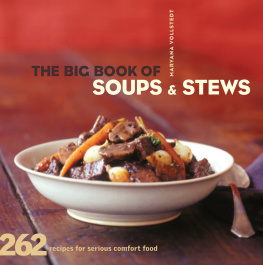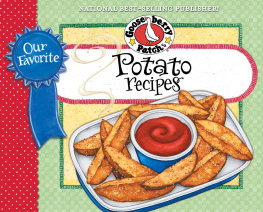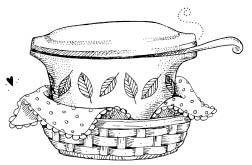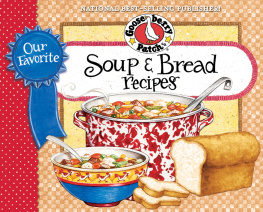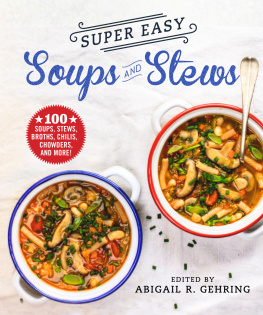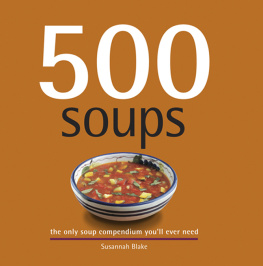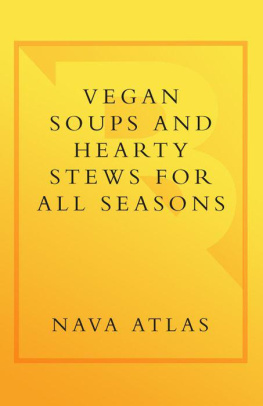Mention of specific companies, organizations, or authorities in this book does not imply endorsement by the author or publisher, nor does mention of specific companies, organizations, or authorities imply that they endorse this book, its author, or the publisher.
Internet addresses and telephone numbers given in this book were accurate at the time it went to press.
2013 by Beatrice Ojakangas
All rights reserved. No part of this publication may be reproduced or transmitted in any form or by any means, electronic or mechanical, including photocopying, recording, or any other information storage and retrieval system, without the written permission of the publisher.
Book design by Kara Plikaitis
Photographs by Hector Sanchez
Library of Congress Cataloging-in-Publication Data is on file with the publisher.
ISBN-13: 9781609613624 paperback
eISBN-13: 9781609613631

We inspire and enable people to improve their lives and the world around them.
rodalebooks.com
To my amazing family:
My husband, Dick Ojakangas
My children and their spouses,
Cathy and Nicho Hatsopoulos;
Greg and Tracie Ojakangas;
Susanna and Peter Elliott
My grandchildren, Niko, Tomas,
and Isabella Friehs; Kieran, Celka,
and Lian Ojakangas;
Frans and Kaisa Elliott
And also to:
True lovers of soup and
homemade bread

CONTENTS

Acknowledgments
N othing comes to fruition without the encouragement of friends and family. First of all, thanks go to my husband, Richard, who encouraged me every step of the way, and to my circle of friends who kept tabs on my progress and were willing tasters.
A special thanks goes to the many volunteers who have assisted me in producing the soup and bread suppers at our church during the Lenten season over the years. The kitchen there is such a fun place to be; we continue to broaden the menu every year and take great pleasure in circling the globe, culinarily speaking.
I owe a debt of gratitude to my agents, Jane Dystel and Miriam Goderich, for believing that I could come up with yet another cookbook. To the folks at Rodale, a big thank-you for embracing soup and bread. Kathleen Hackett, my gentle and knowledgeable editor, has coaxed a thick manuscript into the beautiful pages that follow. Kara Plikaitis conceived of the lovely design, Hector Sanchez shot the gorgeous photographs, Mariana Velasquez prepared the lovely food, and Hilary Robertson provided exquisite styling throughout.
This is truly how miracles are made!
Introduction
It is impossible to think of any good meal, no matter how plain or elegant, without soup or bread in it.
M. F. K. Fisher
W hen I was a young girl, my mother offered up what could be credited as the inspiration for this book. She suggested that I could never go wrong when eating out if I simply ordered soup from the menu. And with that soup, there would always be some kind of bread or cracker worth noting. Ive been sampling soup from around the world ever since. My soup travels, however, are firmly rooted in the rhythm of the seasons in Minnesota, where I live. I take most of my inspiration from what shows up in the farmers market and in the local organic foods store. Availability and seasonality both drive my choices, but so do holidays and the mood a certain time of year cultivates.
In general, I lean toward lighter menus. In spring, for example, I create special soup and bread combinations for Easter and Mothers Day. Its easy to go light when greens such as sorrel, mustard greens, and asparagus begin showing up in the markets. Once summer arrives and the temperature soars (yes, even in Minnesota), I want to chill everything! The warmer months bring a bounty of wonderful fresh farm-stand produceall of it fair game for turning into cooling soups. Wild mushrooms pop up in the forests surrounding my home come autumn, and glorious piles of colorful root vegetables beckon at the farmers markets. In winter, I rely on vegetables that can be stored or preserved, whether dried, frozen, or canned.
Nowhere is cooking to the rhythm of the seasonswhich ultimately becomes traditionmore obvious to me than in northern Europe. For instance, spring and summer in Finland mean that creamy salmon soup served with a chewy dark rye bun is on the menu. In fall, wild mushrooms dominate the soup selection, and a hearty split pea defines the winter season. All over the world, bread in some formflat, quick, loaf, cracker, biscuit, stickis also part of a soup tradition. In France, seafood bouillabaisse is invariably paired with crusty bread; a cheese roll is tucked next to a bowl of ajiaco, or chicken soup, in Colombia.
Wanderlust is in my blood, and many of the soups and breads that appear in this book trace a path around the globe, inspired by the ministries my church supports in many parts of the world. To bring awareness to these ministries, we host a global mission meal once a year. To represent Petrozavodsk, Russia, we made borscht and black bread. El Salvador inspired a red kidney bean soup with popusas. Malaysias menu turned out to be an Asian-style vegetable soup with spring rolls. Most of whats on offer here, however, are just soups we have enjoyed over the years and breads that Ive found go well with each one. The duets are not necessarily carved in stoneof course, you can switch the bread/soup combinations however you wish.
A recent holiday invitation from two dear Finnish friends sums up the warm feelings I have had all my life for the humble pairing of soup and bread: A crust of bread, a bowl of soup, a warm sauna, and a bed await you in our home. Come to visit us in this beautiful northland! Joyfully, Antti and Jane. Breaking bread and sipping lovingly made soup would have been enough, but the sauna and the northland were the swirl of sour cream in the soup! My hope is that after preparing some of the recipes here, youll feel the same way.
Basics: Stocks, Broths, and Breads
You can do almost anything with soup stock; its like a strong foundation. When you have the right foundation, everything tastes good.
Martin Yan
T hey are terms that are often used interchangeably, but a stock and a broth are in fact two different things. Perhaps the confusion lies not only in the similar way the two are usedas a base for soupsbut in their makeup. Both are basically flavored water, with meat and/or vegetables, herbs, and spices long-simmered in the liquid. But there actually is a difference between stocks and broths in that technically, stocks are prepared with bones while broths are not. But that distinction is rarely made in most recipes. Ive developed three basic stock recipes and one broth recipe that are called for throughout this book.




